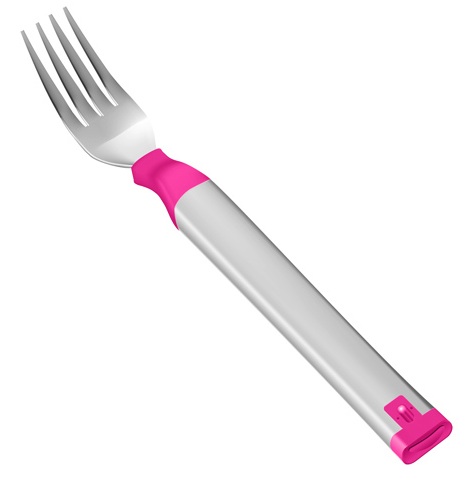AARP Hearing Center
Forks, fitbits and phones highlight CES for 50+
By Suzie Mitchell, January 11, 2013 09:37 AM
I spent two days at the massive Consumer Electronic Show (CES) in Las Vegas searching for mobile apps and gadgets that could help people 50+ enhance their lives.
I saw many products including newfangled televisions, stereo speakers the size of an egg, wristwatch phones (yes, Dick Tracy fans, they have arrived!), cars that drive themselves and completely tricked out smart phone cases that all could be used by boomers and seniors. While many of the gadgets would be fun to have, I wanted to zero in on a few that could help us navigate through life in an easier and healthier way.
Wearable Devices
These are little devices you can hook onto your clothing or wear like wristbands. They have names like NikeFuel, Fitbit and Fitbug. They keep track of how many steps you take per day (10,000 being the optimum) how many flights of stairs you walk, how much energy (calories) you burn and how many miles you walked in a day. The data is synced with an app on your smartphone or computer and gives you your activity levels on an easy to read dashboard. They are available on line or in retail stores for about $100.
My husband and I started wearing Fitbits a few weeks ago. I received one as a gift and loved it so much I bought him one. Now we're in a little healthy (pardon the pun) competition.
It didn't start out like that, but we just can't resist comparing notes. Every day, we check with each other to see who has taken the most steps or climbed the most flights of stairs. In fact, one day we shared that we each parked a little further away from a store in a parking lot, just to get some extra steps. It's really a fun way to increase your daily activity.
Special phones
As wristphones make their way into the stratosphere, it's good to know that some entrepreneurs are looking out for older people whose eyesight is dwindling or who have parents who need assistance.
- CareLine+ phone, by vetch, demonstrated a landline phone with large buttons, and a very easy to read caller ID panel using black letters on a white background for vision impaired users. What makes the phone unique is that it has an emergency monitoring system with no monthly monitoring fees. The phone system-- that retails for $119, also comes with a cordless phone, plus a portable safety pendant with speaker phone. Users can answer the phone with their safety pendant.
- SpareOnePlus is an emergency mobile phone that is small and thin and runs on two AA batteries, has a 15-year shelf life when stored used (that's right, 15 YEARS), and has 10 hours of talk time while in use with a battery that lasts 15 years. It can make calls to emergency services (911, police, fire, etc.) without being connected to a carrier. It also includes a GPS tracker, which can locate the user in an emergency. Its location can also be displayed through an iPhone app, which would need to be paired with the SpareOne Plus prior to use. It is waterproof and has a white LED light that provides up to 24 hours of continuous light. It won the CES Design and Innovation 2013 award in the "Tech for a Better World" category and it is a great addition to your emergency toolkit.
Special smartphone cases
For those of us who use our smartphones often and find we are constantly running out of power, usually when we are away from a charging plug-- these charging packs are a lifesaver.
Brands like mophie (for Apple products) and mycharge (for Apple and all other brands) offer charging packs that look and feel just like plastic smartphone cases but keep your phone charged on the go. These entry level battery cases retail for under $100 and offer four hours of extra talk time. Both companies offer more powerful charging cases that can charge multiple devices for more hours.
A forkful of weight loss

This item seemed to be the most fun and attract the most attention at the show. It's called the HAPifork, and promises to be the "world's first fork that helps you lose weight."
Sign me up. The first ever-electronic fork claims to track the number of fork servings taken per minute per meal. If you eat too fast, the fork lights up and gently vibrates, signaling to slow down.
The weight loss idea being; the slower you eat, the less you eat, the more weight you lose. The HAPifork transmits your eating data from your fork to your with computer and/or smart phone so you can record it and review it on a dashboard. And-get this-you can share your "forkfuls per minute" with your friends and loved ones.
I'm not quite sure how my friends would react getting an email from me with the number of forkfuls of breakfast I consumed. I think that may fall under the TMI category.
The HAPifork is a product of the French based HAPilabs that's mission is to "help people in the 21 st century take control of their "HAPiness, health and fitness through applications and mobile connected devices. For $99, a brightly colored mobile electronic fork that might be the answer to an overeater's prayers. Who knows?
These are just a few of the new and exciting products I discovered at the CES show. Check back for future reviews.































































